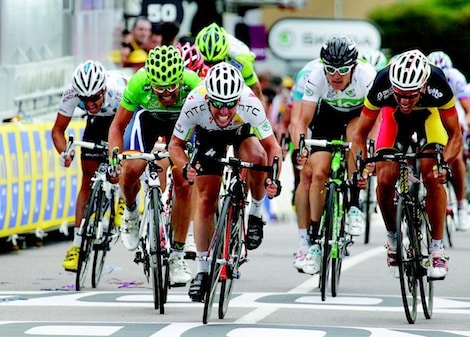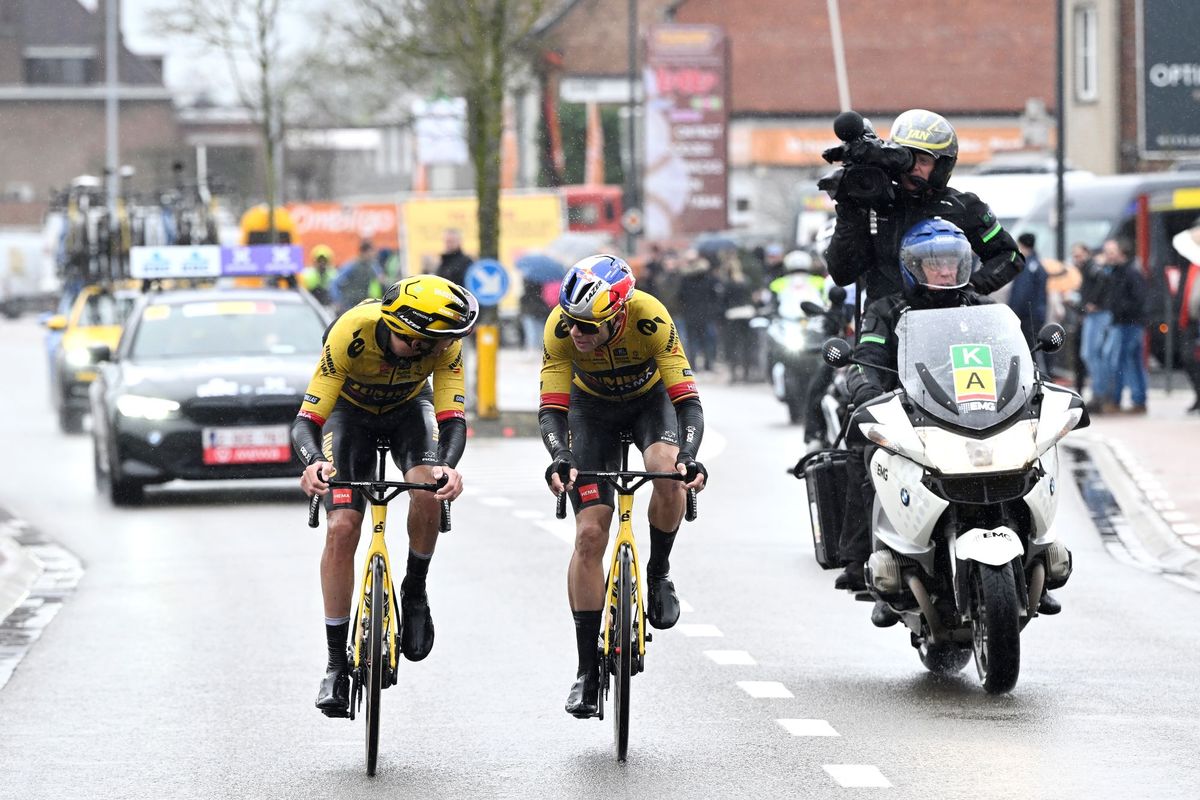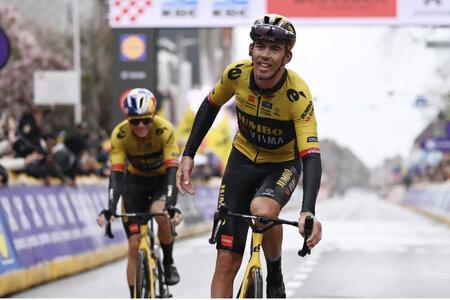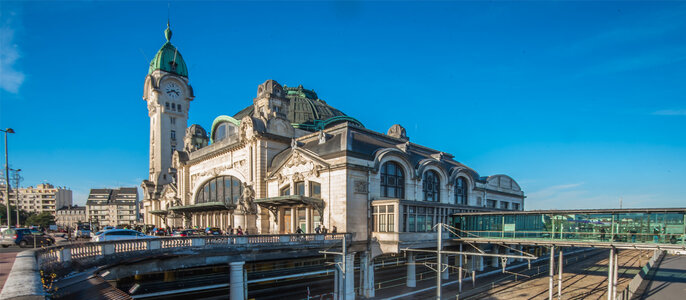CaptRenault
Well-known member
As I noted above in my comment about doping in cycling, riders can't depend anymore on getting away with doping and so they have to use more scientific approaches to training and racing. I don't understand all the science behind modern training methods but I get the main idea, which is that it all comes down to watts.
When the use of power meters became common a number of years ago, this article from Road Bike Action provided an understandable explanation of the importance of measuring and analyzing a rider's power output (watts) during training and racing.
The concept of watts helps explain the differences between powerful but taller and heavier riders like Van Aert and smaller and lighter riders like Vingegaard and Kuss. Pogacar seems to be a unicorn-he can "out power" a powerful guy like Van Aert and out-climb the lightweight climbers like Vingegaard. He reminds me of the past giants of the sport like Eddy Merckx and Bernard Hinault.

...A watt is simply a measurement of power, just as miles per hour is a measurement for speed. From a scientist’s point of view, power is how fast a cyclist produces work, and work is simply the force the legs can generate pushing the pedals, multiplied by the distance. The more work per time, the more powerful the force applied to accomplish that work, thus resulting in higher watts. The work, or energy, is measured in ‘joules,’ which are more commonly known as ‘calories’ in the U.S. One joule is equal to the amount of energy required to produce one watt for one second. Power meters measure in ‘kilojoules,’ and one kj is equal to 4.184 Calories. How does all of that relate to cycling? Well, from a rider’s point of view, power how well one can push the pedals. Allen Lim says, ‘Power is a measurement of intensity. Just like a thermometer inserted into a turkey that is cooking in your oven, the power meter can be used like a thermometer to measure the intensity of your riding experience.’
To measure wattage, a power meter measures two things: torque and cadence. To achieve a higher wattage, you must either increase your cadence in a given gear, or keep your cadence the same and shift to a higher gear; either one will have you putting out more watts, thus increasing speed. Simply shifting into a higher gear and slowing the cadence will increase your torque, but not necessarily your watts. Since everyone’s physiology and riding styles differ, there’s not a specific cadence that is the most efficient for everyone.
POWER AND WEIGHT
To better understand power hierarchy, a rider’s ability is measured in watts per kilograms (1 kilogram equals 2.2 pounds). Climbers such as Alberto Contador churn out many watts per kilogram, and very efficiently. The less bodyweight, the faster a rider will go-at a given power. Contador climbs with much less power than Mark Cavendish produces in a sprint, but Contador sustains those watts for longer distances, while Cavendish does it for just over 400 meters. As a rule, bigger riders can usually produce higher watts than smaller riders. But the benefit of having more power, which is best evidenced on the flats, tends to disappear as the road goes up. When it comes to the climbs, the biggest equalizer among all riders is their power to- weight ratio. Wind resistance aside, if a 150-pound cyclist rides uphill at 300 watts, a 180-pound rider would have to ride at 360 watts just to maintain the same speed; that’s a 20 percent increase in wattage. How much power a cyclist can produce is directly related to the amount of oxygen that can be supplied to the muscles.
In turn, this supply of oxygen is by the amount of blood the heart pumps with each beat, as well as how well the muscle cells are able to extract the oxygen. Taller riders, like George Hincapie, may have a natural advantage in sports like cycling; this is because they can ‘lay down’ more watts over flat roads than lighter riders. Their advantages, such as better torque angle, more muscle mass, larger hearts that pump more oxygenated blood to muscles, more mitochondria to produce the energy to drive the muscles, all lead to the production of more watts. However, when the road goes up, there is a point when a larger rider must produce additional watts solely to overcome the effects of gravity. Nothing is absolute, and there are always exceptions, but most cyclists follow this pattern...
When the use of power meters became common a number of years ago, this article from Road Bike Action provided an understandable explanation of the importance of measuring and analyzing a rider's power output (watts) during training and racing.
The concept of watts helps explain the differences between powerful but taller and heavier riders like Van Aert and smaller and lighter riders like Vingegaard and Kuss. Pogacar seems to be a unicorn-he can "out power" a powerful guy like Van Aert and out-climb the lightweight climbers like Vingegaard. He reminds me of the past giants of the sport like Eddy Merckx and Bernard Hinault.

What's Up With Wattage - Road Bike Action
The Tour finishes so far have been all about POWER, but the meaning can be elusive
roadbikeaction.com
...A watt is simply a measurement of power, just as miles per hour is a measurement for speed. From a scientist’s point of view, power is how fast a cyclist produces work, and work is simply the force the legs can generate pushing the pedals, multiplied by the distance. The more work per time, the more powerful the force applied to accomplish that work, thus resulting in higher watts. The work, or energy, is measured in ‘joules,’ which are more commonly known as ‘calories’ in the U.S. One joule is equal to the amount of energy required to produce one watt for one second. Power meters measure in ‘kilojoules,’ and one kj is equal to 4.184 Calories. How does all of that relate to cycling? Well, from a rider’s point of view, power how well one can push the pedals. Allen Lim says, ‘Power is a measurement of intensity. Just like a thermometer inserted into a turkey that is cooking in your oven, the power meter can be used like a thermometer to measure the intensity of your riding experience.’
To measure wattage, a power meter measures two things: torque and cadence. To achieve a higher wattage, you must either increase your cadence in a given gear, or keep your cadence the same and shift to a higher gear; either one will have you putting out more watts, thus increasing speed. Simply shifting into a higher gear and slowing the cadence will increase your torque, but not necessarily your watts. Since everyone’s physiology and riding styles differ, there’s not a specific cadence that is the most efficient for everyone.
POWER AND WEIGHT
To better understand power hierarchy, a rider’s ability is measured in watts per kilograms (1 kilogram equals 2.2 pounds). Climbers such as Alberto Contador churn out many watts per kilogram, and very efficiently. The less bodyweight, the faster a rider will go-at a given power. Contador climbs with much less power than Mark Cavendish produces in a sprint, but Contador sustains those watts for longer distances, while Cavendish does it for just over 400 meters. As a rule, bigger riders can usually produce higher watts than smaller riders. But the benefit of having more power, which is best evidenced on the flats, tends to disappear as the road goes up. When it comes to the climbs, the biggest equalizer among all riders is their power to- weight ratio. Wind resistance aside, if a 150-pound cyclist rides uphill at 300 watts, a 180-pound rider would have to ride at 360 watts just to maintain the same speed; that’s a 20 percent increase in wattage. How much power a cyclist can produce is directly related to the amount of oxygen that can be supplied to the muscles.
In turn, this supply of oxygen is by the amount of blood the heart pumps with each beat, as well as how well the muscle cells are able to extract the oxygen. Taller riders, like George Hincapie, may have a natural advantage in sports like cycling; this is because they can ‘lay down’ more watts over flat roads than lighter riders. Their advantages, such as better torque angle, more muscle mass, larger hearts that pump more oxygenated blood to muscles, more mitochondria to produce the energy to drive the muscles, all lead to the production of more watts. However, when the road goes up, there is a point when a larger rider must produce additional watts solely to overcome the effects of gravity. Nothing is absolute, and there are always exceptions, but most cyclists follow this pattern...






